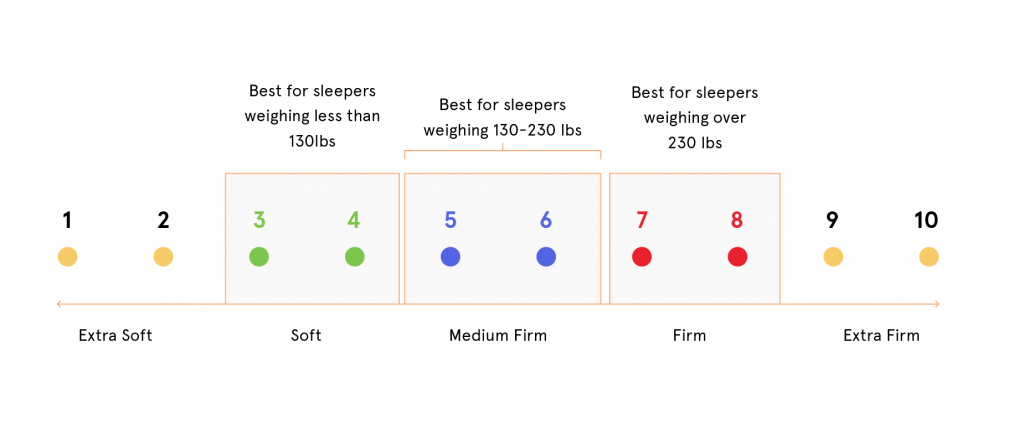Choosing the Best Mattress for Back Sleeping: Finding Your Firmness Level
 Mattress support is key for back sleepers. A supportive mattress will have a flat, even surface that will conform to the sleeper’s body and align the spine without sinking too deeply. How supportive or unsupportive a mattress feels will largely depend on two factors: the firmness of the sleep surface and the sleeper’s body weight.
Mattress support is key for back sleepers. A supportive mattress will have a flat, even surface that will conform to the sleeper’s body and align the spine without sinking too deeply. How supportive or unsupportive a mattress feels will largely depend on two factors: the firmness of the sleep surface and the sleeper’s body weight.
Mattress firmness is assigned using a 1 to 10 scale, with 1 being the least firm and 10 being the firmest. The majority of mattresses sold today range from 3 (or ‘Soft’) to 8 (or ‘Extra Firm). People who weigh between 130 and 230 pounds are considered to be ‘average weight’; for most people in this group, ‘medium’ or ‘medium firm’ mattresses offer the best support because they conform to a degree but to not sink excessively.
Firmness preferences are usually different for other weight groups. People who weigh less than 130 pounds may prefer a softer mattress, while those who weigh more than 230 pounds often feel most comfortable on a ‘firm’ or ‘extra firm’ mattress because softer sleep surfaces sink too deeply; this also compromises support.
The table below illustrates the varying firmness preferences for back sleepers in different weight groups.
The diagram below illustrates the optimal firmness settings for back sleepers in each of the three weight groups.

Which Types of Mattresses Are Best for Back Sleepers?
In addition to firmness and sleeper weight, the material composition of a mattress is another important consideration for back sleepers. Mattresses with foam, latex, or air chamber layers tend to conform better and alleviate more pressure, while those with coils sleep cooler and provide better edge support. Other factors for choosing a mattress type include durability, noise, odor potential, and price-point.
Below, we provide an overview of the five most common mattress types, including their material composition, and their pros and cons for back sleepers.
Best Foam Beds for Back Sleepers
Mattress Reviews
Nectar Mattress Review
Mattress Reviews
Novosbed Mattress Review
Mattress Reviews
GravityLux Mattress Review
Foam mattresses have a support base of high-density polyfoam, with comfort layers of polyfoam or memory foam. These mattresses are favored for their pressure-relieving “hug.” The memory foam creates the feeling of sleeping “in” the mattress, as the foam conforms closely to the body. For back sleepers, that close conforming means the mattress cradles their body, filling in the gaps between their spine and the mattress surface to promote proper alignment. This ensures a comfortable night’s sleep for any back sleeper, especially for those with chronic pain.
Other benefits of foam mattresses include their superior motion isolation. The foams absorb movement and don’t produce noise, so the bed’s surface stays silent and still despite disruptions from a moving partner or pet.
As for cons, foam mattresses do have the potential to trap body heat, thanks to their body-hugging feel. Some mattress brands alleviate this to an extent by infusing their foam with cooling material like copper, graphite, or gel – as we see with the MemoryLux, Novosbed, and Nectar mattresses. Another downside to foam mattresses is their minimal edge support.
Best Innerspring Beds for Back Sleepers
Mattress Reviews
Saatva Mattress Review
Innerspring mattresses use a grid of evenly spaced steel springs in their support core, with base layers of polyfoam. On top, the comfort layers are made of polyfoams, memory foam, or even minicoils, as we see in the Saatva.
That uniform coil support layer makes these mattresses particularly supportive for back sleepers. The innerspring base provides evenly distributed support throughout the mattress, keeping the sleeper’s spine straight. Then, comfort layers provide the sleeper with a small amount of cushioning and pressure point relief.
However, innerspring mattresses can be prone to sagging, and tend to have shorter lifespans than other mattresses. Back sleepers will likely need to replace their mattress after a handful of years; otherwise, they may start waking up with aches and pains.
As long as the mattress stays sag-free, these beds can be a great choice for back sleepers who tend to sleep hot, want a good value, and enjoy a responsive surface for sex. The innerspring coil core keeps these beds cool throughout the night, and also lends them an excellent bounce for amorous activity. Plus, these beds are widely available and usually pretty affordable.
Best Hybrid Beds for Back Sleepers
Mattress Reviews
WinkBeds Mattress Reviews
The “hybrid” in hybrid mattresses refers to these beds combining different qualities of foam and innerspring beds. Hybrid mattresses use pocketed coils as their support system, along with base layers of polyfoam. Comfort layers include at least two inches of latex or memory foams.
Hybrid mattresses offer several benefits to back sleepers, the most notable being their balance of conforming and support. The comfort layer of these mattresses is thick enough to provide serious pressure relief, with additional contouring from the individual pocketed coil core. However, since hybrid beds do have a coil-based support system, back sleepers are prevented from sinking too deeply into the mattress – especially in the pelvis area, which can lead to pain in the lower back.
Other benefits include the bed’s strong edge support, which can be an important consideration for couples, those who sleep across the surface of their bed, or anyone who needs to sit on the edge of the mattress when getting in and out of bed. Hybrid beds also tend to sleep cooler than all-foam beds, since the pocketed coil core promotes airflow.
However, hybrid mattresses will not sleep as cool as innerspring beds, so those who tend to sleep hot will want to take a close look at the heat potential of the foams used in the comfort layers. Cooling materials like graphite, gel, or natural latex will help neutralize the mattress temperature.
These beds can also carry a higher price-point than the average mattress, and tend to have a dense construction that makes them more difficult to move.
Latex mattresses use latex or high-density polyfoam in their support layer, with natural or synthetic latex foams in their comfort layer. The use of latex gives these mattresses a unique feel that can feel too responsive for some back sleepers, and just right for others.
Generally, latex mattresses are popular among those who want a mix of contouring and support, without the heat-trapping “hug” of memory foam. Like all-foam beds, latex mattresses boast minimal motion transfer (so they sleep quiet). However, they tend to sleep significantly cooler – and all the more so if they’re made entirely from natural latex. Because they’re made from latex, they have a natural “springiness” that makes them great for sex, too.
However, latex mattresses are not without their cons. These beds typically have below-average edge support, and they’re also more expensive and less available than other mattress types.
Airbeds use air as their support system, with individual air chambers that can be adjusted manually or using a remote control. Comfort layers are usually comprised of foam.
When it comes to firmness, airbeds offer sleepers a level of customization that’s unmatched by any other mattress types. They can simply adjust the amount of air in the chambers to their exact desired firmness. This feature can make airbeds a smart choice for back sleepers with chronic pain, or varying firmness needs.
However, this may require more finagling than some mattress owners want to deal with. Further, while airbeds can last longer than other mattress types, various parts will need regular replacement in order to reach their maximum lifespan.
The table below summarizes the key differences and similarities between these five most common mattress types, and explains which are most suitable for back sleeping.
Tips for Buying a Mattress
Once you decide which mattress type is best for you, here are some tips for ordering and purchasing your new mattress:


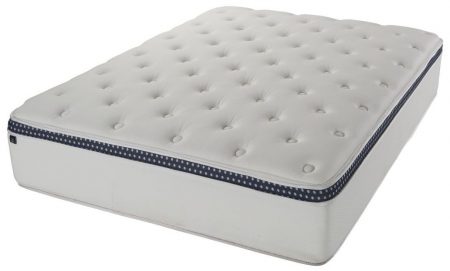
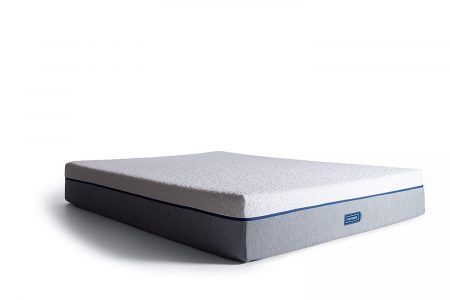
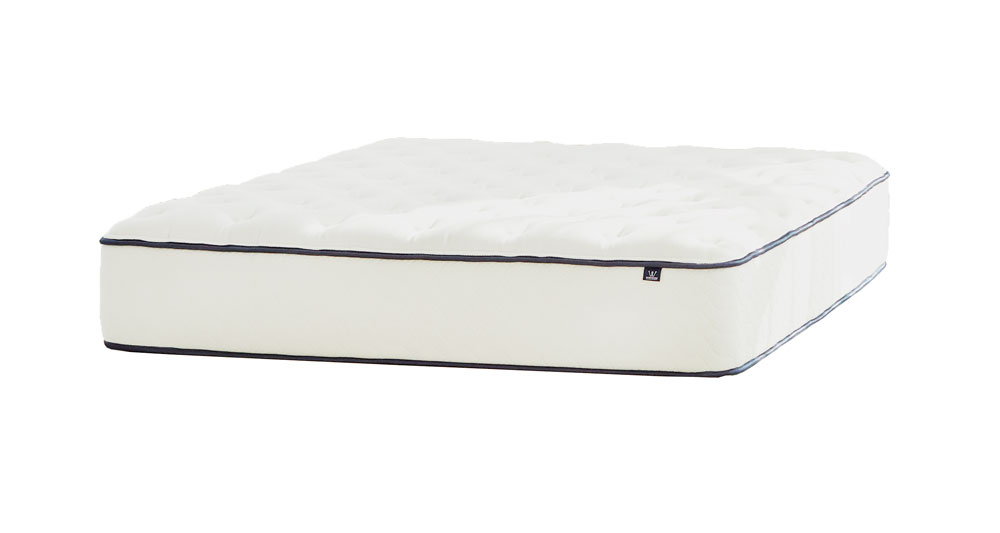
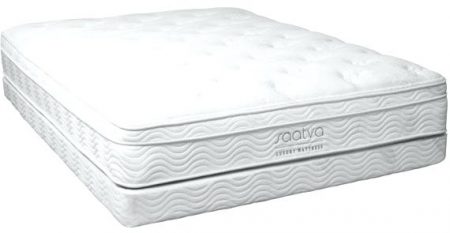
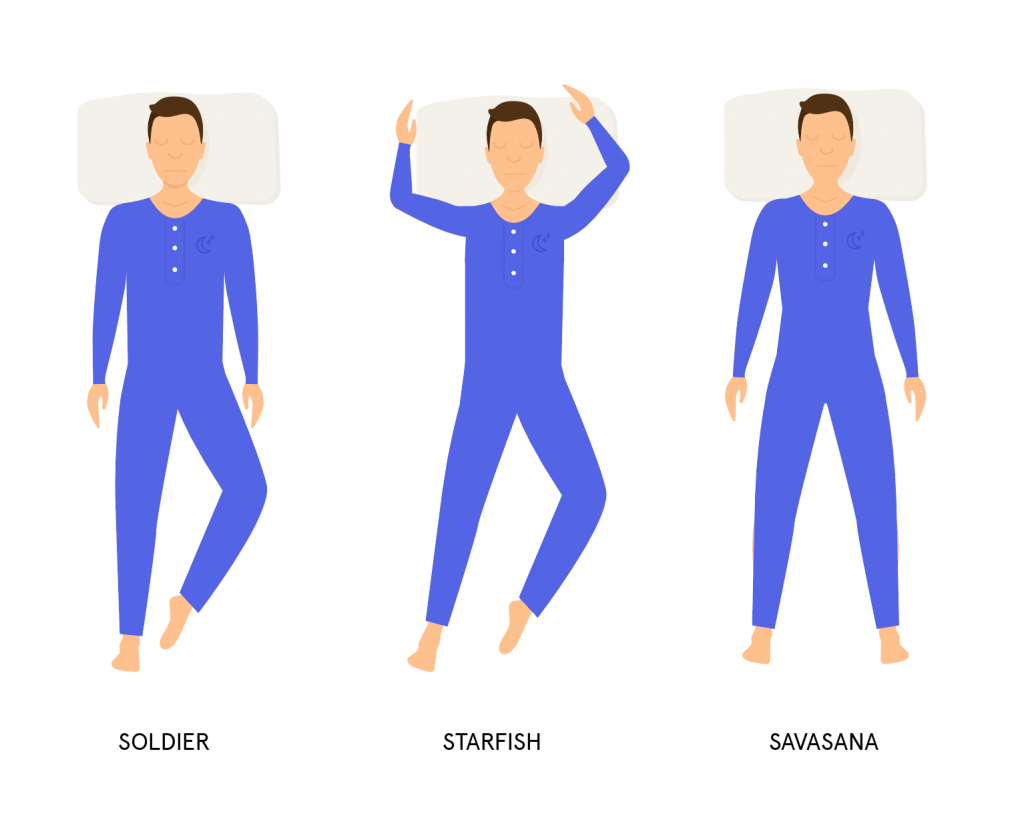
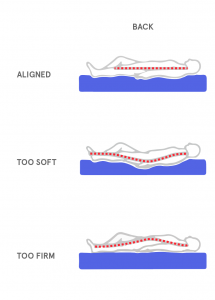 Mattress support is key for back sleepers. A supportive mattress will have a flat, even surface that will conform to the sleeper’s body and align the spine without sinking too deeply. How supportive or unsupportive a mattress feels will largely depend on two factors: the firmness of the sleep surface and the sleeper’s body weight.
Mattress support is key for back sleepers. A supportive mattress will have a flat, even surface that will conform to the sleeper’s body and align the spine without sinking too deeply. How supportive or unsupportive a mattress feels will largely depend on two factors: the firmness of the sleep surface and the sleeper’s body weight.